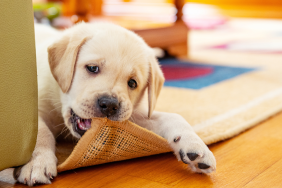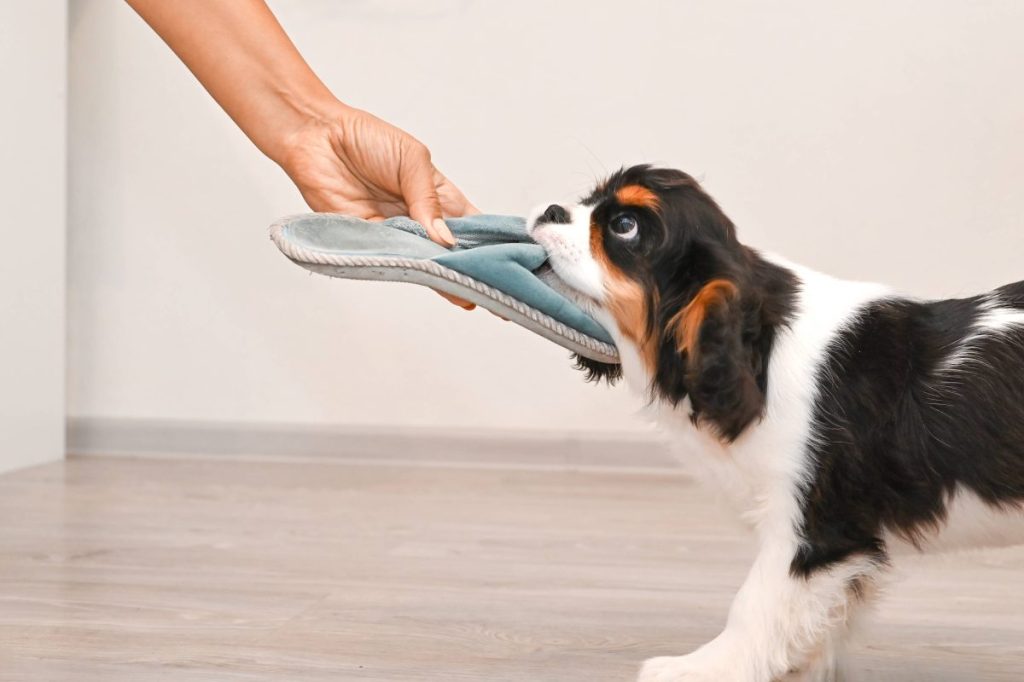The sight of a chewed-up slipper or a pile of shredded papers is one many dog parents are all too familiar with. It can leave you wondering what goes on in your pup’s mind! While chewing is a natural instinct for dogs, it can quickly become a nuisance when they target your favorite belongings. Luckily, with some understanding and redirection, you can help your pup find better ways to satisfy this need. Here, we’ll discuss the reasons for destructive chewing and share practical solutions to protect your home while keeping your furry friend happily occupied.
Table of contents
Why do dogs chew?
It might look like your dog is just being mischievous when they chew on things, but there’s actually a lot more to it. Firstly, chewing is one of the ways dogs explore the world around them. Much like how infants use their mouths to discover new objects, canines use chewing to understand their environment. It’s their way of figuring out what things are and what they might be used for.
Puppies, in particular, chew because they’re teething. During this developmental stage, their gums can become sore and inflamed as new teeth emerge. Chewing helps alleviate the discomfort and pressure associated with this process.
As dogs grow, chewing continues to be an essential part of their lives. The mechanical action of chewing effectively removes plaque and supports dental health. However, it goes beyond just physical benefits; chewing plays a significant role in their mental well-being too. Dogs often chew to relieve boredom and reduce stress. It’s similar to how some humans might doodle or fidget with a pen when they’re feeling a little antsy. If your dog is left alone for long periods, you may notice they turn to chewing as a way to entertain themselves and cope with their feelings.
Sometimes, dogs might also chew to get your attention. If they feel like they’re not getting enough playtime or interaction, they might start gnawing on something they shouldn’t, just to get a reaction from you.
How to stop your dog from chewing everything
Addressing destructive chewing in your dog requires both understanding and the right approach. Try these practical tips to help curb this behavior:
Understand your dog’s needs
The first step is figuring out why your dog is chewing so much. Spend some time observing their behavior to spot any possible triggers. Does it happen mostly when they’re left alone? Is there a specific time of day when it’s more frequent? Noticing these patterns and getting to the root cause will help you find the best approach to meet their specific needs.
Provide appropriate chew toys

One of the simplest ways to redirect your dog’s chewing is by providing them with a variety of safe, appropriate chew toys. Pick toys that match your dog’s size, age, and chewing strength. For puppies, softer toys that soothe their gums are ideal, whereas adult dogs might prefer tougher, more durable options. Make sure to rotate the toys regularly to keep them interesting. You’ll also want to encourage your dog to use these toys by offering praise and treats when they choose them over your shoes or furniture.
Keep your pup mentally and physically stimulated
A tired dog is a well-behaved dog. Often, destructive chewing is a sign of pent-up energy or boredom. To combat this, increase your dog’s physical activity with regular walks, play sessions, and even agility training if you’re up for it. Additionally, challenge your pup’s mind with puzzle toys or training exercises that make them think. Mental stimulation can be just as tiring as physical exercise and will help satisfy your dog’s need for engagement, leaving them less inclined to chew on everything in sight.
Puppy-proof your home
As with any type of behavior you wish to change, one of the most important things to do is manage the environment. Start by puppy-proofing your home to keep your dog safe from items that could be harmful if chewed, such as:
- Cords and wires: Keep cords and wires out of reach by tucking them behind furniture or using cord covers. For a tidy, secure setup, consider using cord management systems to keep everything organized and safe. Be especially mindful of curtains and blinds with cords, as they can pose a strangulation risk.
- Electronic devices: Keep electronic devices out of reach. When not in use, store items like remote controls, phones, and tablets in drawers or cabinets.
- Shoes and personal items: Shoes are especially tempting for dogs to chew because of their texture and the familiar scent of their owner. To prevent this, place them in closed closets or on high shelves out of your dog’s reach. If your dog does manage to grab a shoe, calmly take it away and immediately offer a chew toy instead to reinforce positive behavior. The same goes for other personal items like clothing or bags — keep them securely stored to avoid unwanted chewing.
- Household cleaners and indoor plants: Many household cleaning products and indoor plants are toxic to dogs and can pose serious health risks if chewed or ingested. Put these items in a cabinet, and consider using child-proof locks for added security.
Keep in mind, puppy-proofing isn’t just for puppies; it applies to all dogs, especially those prone to chewing.
Establish a consistent routine
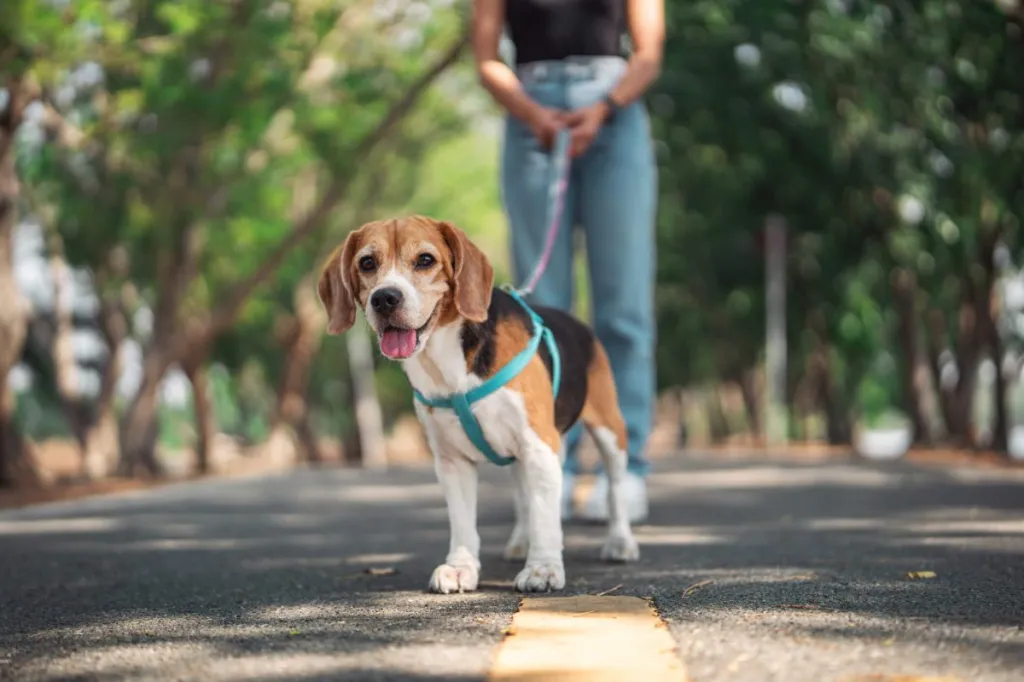
Dogs thrive on routine and structure. Establish a consistent daily schedule that includes feeding, playtime, walks, and rest. A predictable routine can provide stability and reduce anxiety, potentially minimizing the need to chew out of nervousness or uncertainty.
Use deterrent sprays to stop dog chewing and licking
There are several dog-safe deterrent sprays available on the market that can be applied to furniture and other items you want to protect from chewing. These sprays have a bitter taste that discourages dogs from chewing on treated surfaces. Be consistent in applying these deterrents until your dog learns to avoid the items altogether.
Train with positive reinforcement
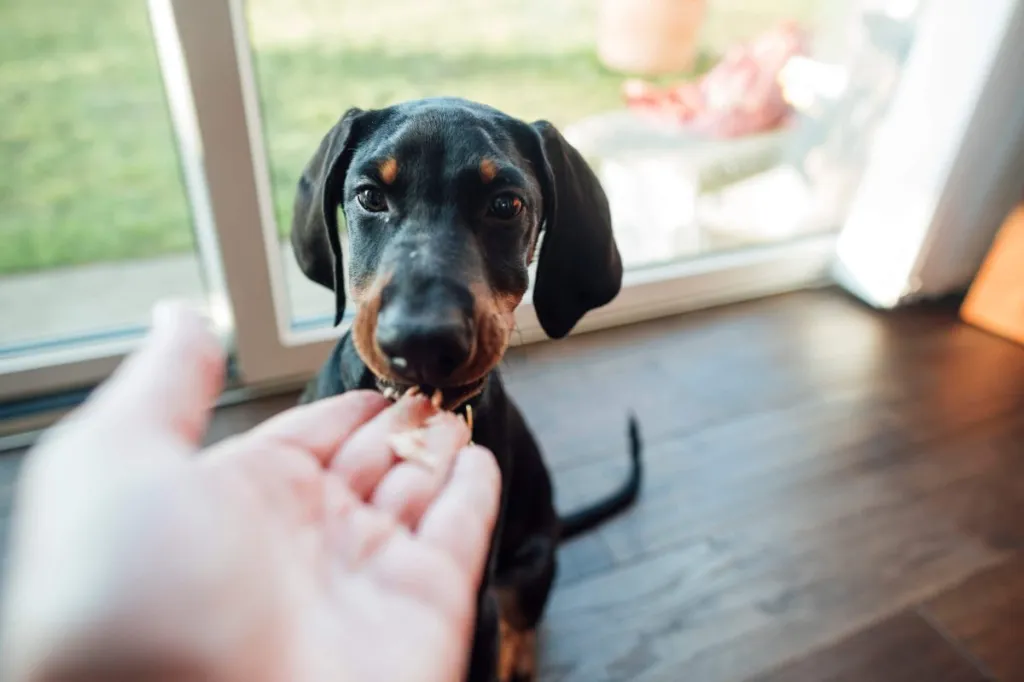
This one might sound like a no-brainer, but you’d be surprised at how many people skip it. Basic training can go a long way in curbing destructive behavior. Use positive reinforcement by praising and rewarding your dog with treats or affection whenever they chew on appropriate items. This encourages them to stick to good habits.
Conversely, avoid negative reactions like shouting or punishment, which can increase anxiety and worsen the problem. Instead, calmly redirect your dog’s attention to a suitable chew toy. Consistency is key here; over time, your dog will learn what’s off-limits. Simple commands like “leave it” or “drop it” can also be helpful for interrupting unwanted behavior.
Address anxiety or stress
If your dog is chewing due to anxiety or stress, it’s important to address these emotional issues. Separation anxiety is a common cause of destructive chewing. If this is the case, try gradually getting your dog used to being alone for short periods, then slowly increasing the time. Comforting items like a piece of your clothing or special calming dog treats can also help soothe their anxiety. In more severe cases, consulting a professional dog trainer or veterinarian might be necessary to tackle the underlying anxiety.
At what age do dogs stop chewing?
Dogs typically begin to ease up on their chewing habits once they have finished teething, which usually happens around seven months of age or when they enter adolescence. However, it’s important to remember that chewing is a natural behavior for dogs of all ages. Adult dogs still have the instinct and need to chew, whether it’s to keep their jaws strong, relieve stress, or simply out of habit.
The key to managing this behavior is early and consistent training. By teaching your puppy which items are appropriate to chew on and providing a variety of suitable chew toys, you can guide them toward making better choices as they grow. Adult dogs with a solid training foundation are more likely to know the difference between what they can chew and what they can’t. And don’t forget: even as dogs mature, they still benefit from the mental and physical stimulation that chewing provides. So, be sure to accommodate this urge in a healthy manner to keep your pooch happy and content!
When to seek professional help
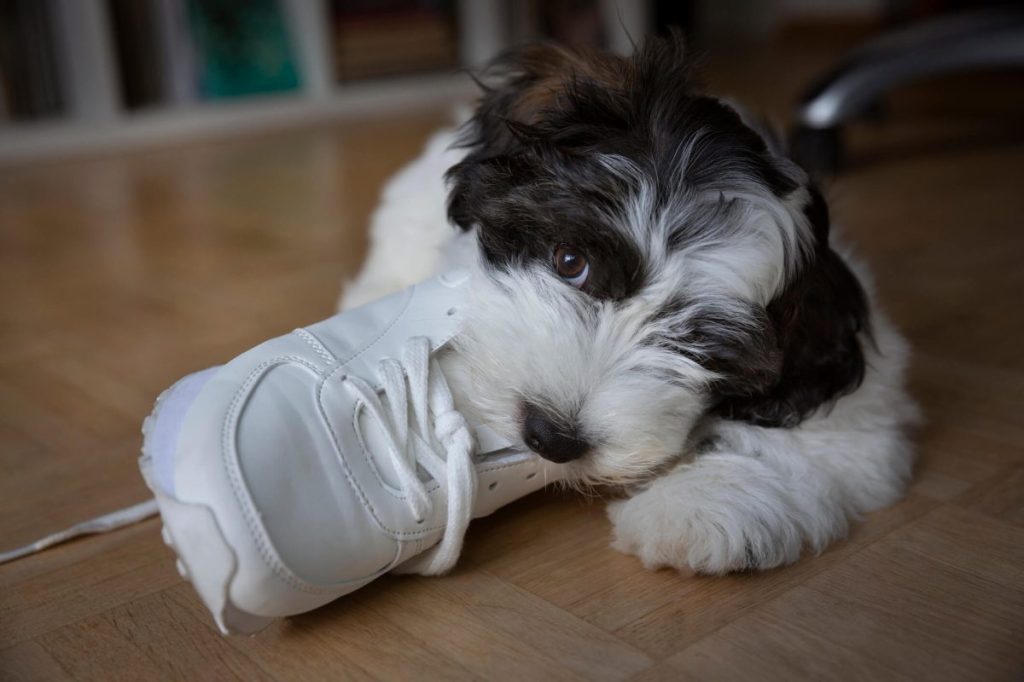
If your dog’s destructive chewing persists despite your best efforts, it might be time to seek professional help. A veterinarian can check for any underlying health issues that might be contributing to the behavior. Meanwhile, a professional dog trainer or behaviorist can give you tailored advice based on your dog’s unique needs. They’ll share insights and strategies you may not have considered and help you create a solid plan to manage your dog’s chewing habits effectively. Don’t hesitate to get that extra support — sometimes a fresh perspective can make all the difference!
More on Dog Behavior
